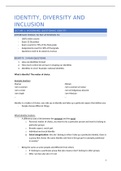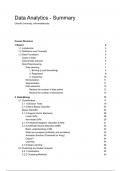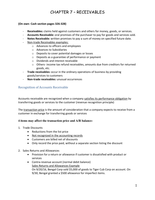Samenvatting
Summary Identity , Diversity and Inclusion (S_IDI)
Deze samenvatting bevat alle informatie uit de slides en mijn eigen aantekeningen uit de colleges, inclusief voorbeelden en belangrijke foto's/grafieken. De samenvatting bevat ook aantekeningen uit de onderzoeksartikelen zoals bijvoorbeeld Crul (2016), Haile & Siegmann, Young (1990), etc. Ik had e...
[Meer zien]







